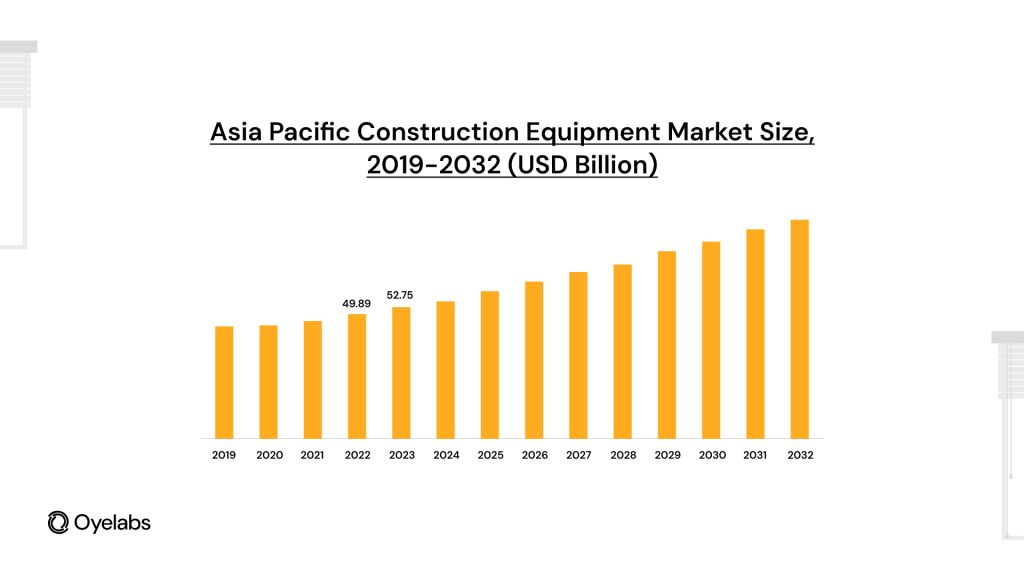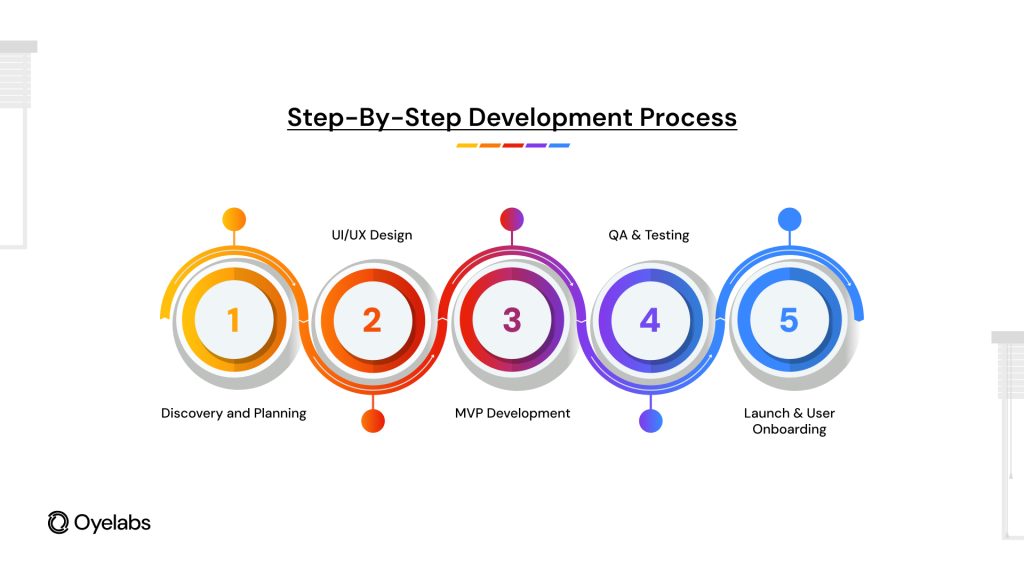How to Launch an Equipment Rental Platform – A Complete Guide

How to Launch an Equipment Rental Platform – A Complete Guide
Last Updated on June 4, 2025
Ever found yourself stuck needing equipment for a project but didn’t want to buy it outright? Or maybe you have gear gathering dust and want to make it work for you? Launching an equipment rental app is the perfect solution to connect renters with owners, making access easy, fast, and reliable. The equipment rental market is booming, driven by industries like construction, events, and agriculture, all looking for cost-effective solutions.
This complete guide walks you through every step—from planning and designing your platform to launching and scaling it for success. Whether you’re a first-timer or looking to digitize an existing rental business, this guide offers clear, actionable insights to help you build a platform that users love and trust. Ready to start? Let’s get into it!
Understanding the Equipment Rental Market
Market Size and Growth
The global construction equipment rental market size was valued at USD 120.86 billion in 2023 and is projected to grow from USD 126.15 billion in 2024 to USD 200.85 billion by 2032, exhibiting a compound annual growth rate (CAGR) of 6.0% during the forecast period. The Asia Pacific region dominated the global market with a share of 43.62% in 2023.
This growth is driven by industries such as construction, events, agriculture, and manufacturing, all seeking more agile and cost-efficient ways to access equipment. Technological innovation and increased smartphone penetration have further enabled on-demand booking, seamless digital payments, and real-time inventory tracking—turning traditional rental operations into modern digital businesses.
Why Customers Choose to Rent
- Cost Efficiency: Avoiding high upfront costs and maintenance fees makes renting appealing.
- Access to Modern Tools: Users benefit from the latest equipment without needing to invest in upgrades.
Flexibility: Rent only what’s needed, when it’s needed—reducing idle inventory. - Reduced Storage Burden: No need to store or maintain rarely used machinery.
Gaps in the Market You Can Fill
Despite the growth, many rental businesses still rely on manual processes, offline bookings, or outdated websites. Common issues include:
- Lack of real-time availability tracking
- Poor inventory visibility
- Inefficient communication between users and vendors
Limited insurance options and risk coverage
Also Read: Start a Successful Vacation Rental Business
Step-by-Step Development Process
Step 1: Discovery and Planning
This is the foundational phase where your idea begins to take shape. It involves defining your vision, understanding your market, and outlining what success looks like.
- Define Your Business Goals and Target Market: Are you focusing on construction rentals, event gear, or something more niche like drone equipment? Clarifying your niche and customer segment helps tailor your platform to solve the right problems.
- Conduct Competitor Research: Study platforms like BigRentz, Fat Llama, or local rental apps to identify what they do well and where they fall short. This helps you position your platform effectively.
- Identify Your Feature Set and Monetization Strategy: Decide which features are must-haves for your Minimum Viable Product (MVP) and how you’ll generate revenue—whether through commissions, subscriptions, or premium listings.
Step 2: UI/UX Design
User experience is what makes or breaks a digital product. Even powerful features can fail if users find the interface confusing or slow.
- Wireframe the Platform Layout: Sketch a rough layout of your platform to visualize the structure—home page, search results, listing pages, vendor dashboards, etc.
- Design High-Fidelity Screens: Once wireframes are approved, your design team creates polished versions with actual colors, fonts, buttons, and images.
- Test Usability with a Focus Group: Gather feedback from a small group of potential users—both renters and vendors—to refine the flow and eliminate confusion early on.
Step 3: MVP Development
This is where your platform starts coming to life. The goal is to build a lean but functional version of your platform that offers core value without bloated features.
- Build Core Functionality: Focus on must-have components—search and filtering, listing equipment, booking, payment gateway, and user logins.
- Create Admin Dashboard and User Interfaces: Ensure that admins can manage listings, resolve disputes, and track commissions, while renters and vendors have intuitive dashboards.
- Integrate Messaging and Support Tools: In-app messaging, help desks, and notifications improve communication and support, reducing drop-offs and disputes.
Step 4: QA & Testing
Before going live, your product needs to be tested under real-world conditions to ensure performance, security, and usability.
- Run Functional Testing, Stress Tests, and Security Audits: Verify that every feature performs correctly across devices and browsers. Load test to ensure your platform won’t crash under user traffic. Conduct audits to prevent data breaches and unauthorized access.
- Include User Testing to Gather Real-World Feedback: Invite a group of early users to test the platform and report bugs, confusing flows, or missing features. Their input is invaluable in fine-tuning the experience.
Step 5: Launch & User Onboarding
With a stable MVP and refined user experience, it’s time to take your product to market.
- Soft Launch with Select Vendors and Users: Start small—invite trusted vendors and a limited number of users to test live operations. Monitor transactions, track support queries, and fine-tune operations.
- Use Beta Feedback to Refine and Fix Issues: Adjust pricing, fix usability problems, or optimize onboarding flows based on real user behavior.
- Scale to Full Release: Once the system runs smoothly, invest in marketing and scale operations. Add more features, onboard new vendors, and expand to new markets or categories.
Must-Have Features for Your Equipment Rental Platform
Renter-Side Features
- Advanced Search and Filter Tools: Let users sort by category, price, location, availability, and ratings.
- Detailed Listings: Include high-quality images, specifications, manuals, pricing tiers, and required accessories.
- Real-Time Availability Calendars: Allow renters to see available booking slots instantly.
- Secure Booking & Payment System: Integrated payment gateways with support for credit cards, wallets, and escrow.
- Personal Dashboard: Users should be able to view their current, upcoming, and past rentals.
- Reviews & Ratings: A transparent review system builds trust and ensures accountability.
- Support & Notifications: In-app chat support, push notifications for returns, and payment reminders.
Vendor-Side Features
- Multi-Item Listings: Equipment owners should be able to list and manage multiple assets.
- Rental Pricing & Availability Settings: Dynamic pricing options and calendar-based availability management
- Order Management Dashboard: Monitor new bookings, active rentals, cancellations, and earnings.
- Inventory Management: Update stock, flag unavailable items, or schedule maintenance.
- Messaging Tools: Communicate with renters to clarify usage, pickup details, or other queries.
Admin Panel Features
- User & Listing Management: Oversee all registered users, approve vendors, and moderate content.
- Commission Tracking: Configure platform fees and monitor revenue streams.
- Analytics Dashboard: Monitor booking trends, top-performing categories, customer behavior, etc.
Dispute Resolution Center: Manage claims and ensure fair resolutions between renters and vendors. - Content & SEO Tools: Manage FAQs, help guides, blogs, and SEO metadata for visibility.
Revenue Models and Monetization Strategies
Primary Business Models
- Commission-Based: Earn a percentage on each transaction. Common for P2P and B2C platforms.
- Subscription Model: Charge vendors a recurring fee for listing and using premium features.
- Listing Fees: Vendors pay per item listed, or for boosting listings to top spots.
- Freemium Model: Basic listings are free, but value-added services like promotion or insurance cost extra.
Additional Revenue Streams
- Insurance Add-ons: Offer damage, theft, and liability coverage via partnerships.
- Logistics and Delivery Charges: Let users schedule delivery and returns at a fee.
- Featured Ads and Promotions: Vendors can pay to be highlighted on the homepage or in search results.
- Data Licensing: Sell anonymized industry usage data to manufacturers or equipment suppliers.
Ready to Launch Your Equipment Rental Platform?
The equipment rental market is booming, and now is the perfect time to capitalize on this opportunity. At Oyelabs, we specialize in developing custom, scalable equipment rental platforms designed to deliver seamless user experiences for both renters and equipment owners. From intuitive search and booking features to secure payment integration and efficient inventory management, we cover every aspect to help your business thrive.
Our expert team guides you through the entire development process — from initial planning to launch and beyond. Whether you want to target construction machinery, event equipment, or specialty tools, we tailor solutions to meet your unique needs. Take the first step toward success — contact Oyelabs today and let’s build your rental platform together!
Conclusion
Launching an equipment rental platform is a promising venture with immense potential in today’s sharing economy. By focusing on user-friendly features, seamless operations, and a well-defined development process, you can build a platform that attracts both renters and equipment providers. From planning and design to testing and launch, each step plays a crucial role in ensuring success. Whether you’re targeting construction tools, event gear, or specialty equipment, the key lies in delivering value, trust, and convenience. With the right strategy and tech partner, your rental marketplace can scale rapidly and stand out in an increasingly competitive digital marketplace.






